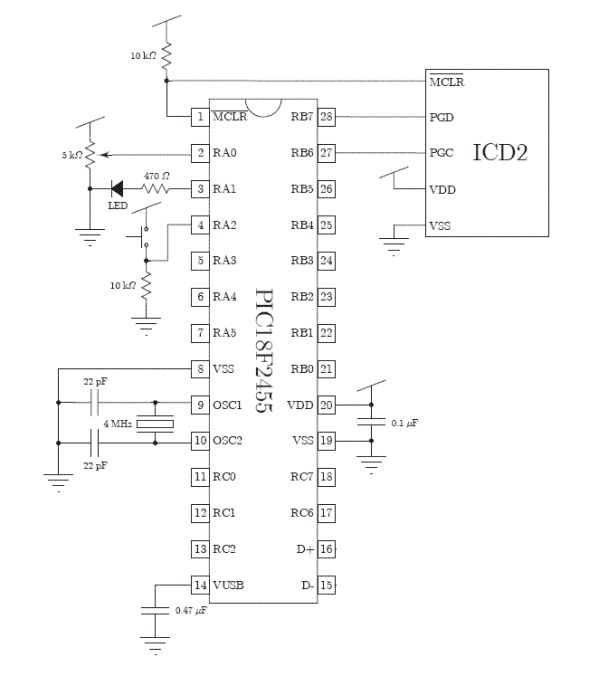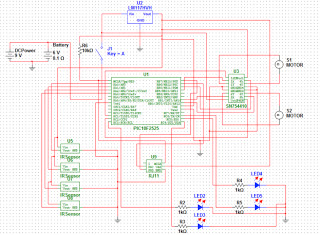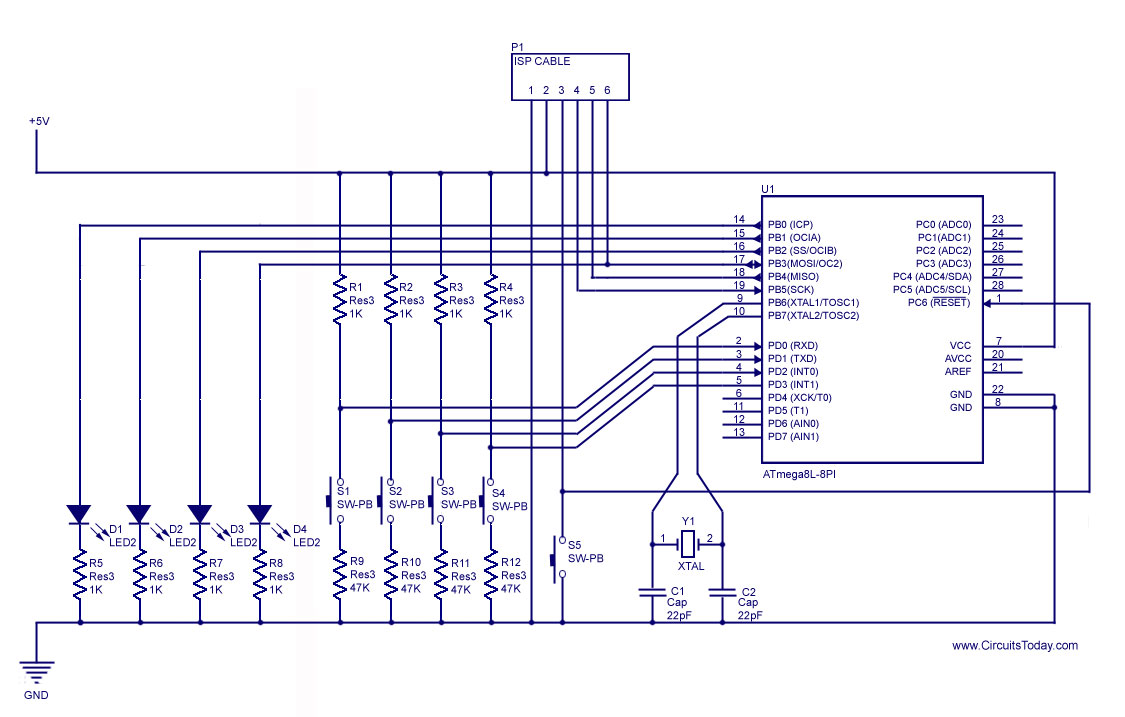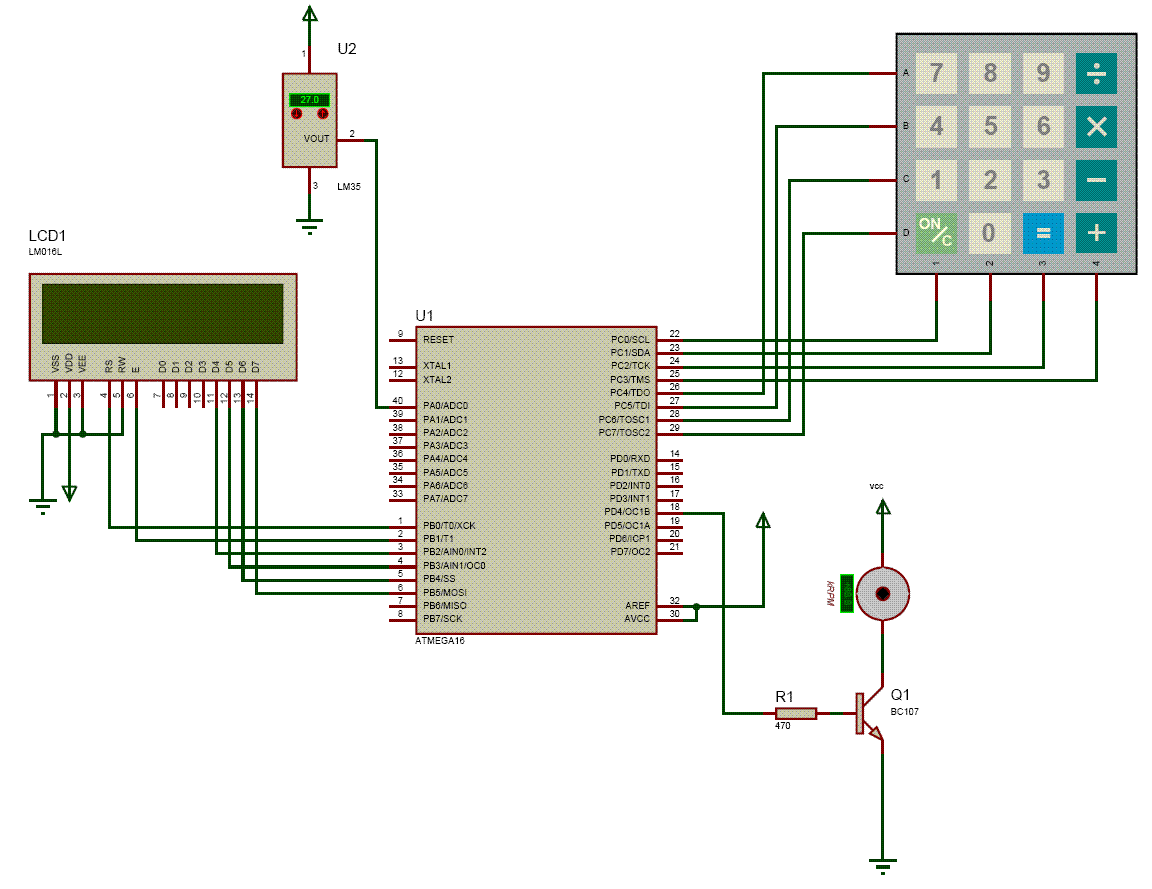
Model rocket launch controller
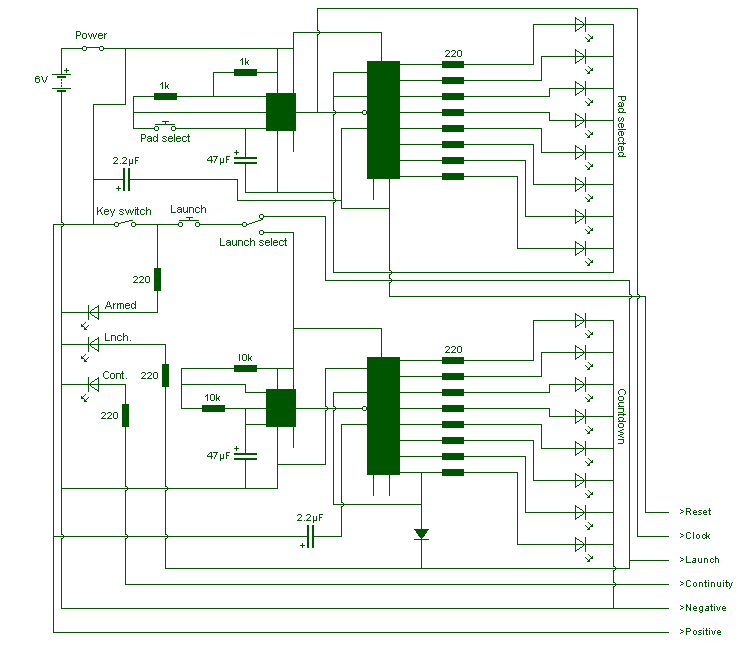
Eight LEDs are used to indicate the pad currently selected. These LEDs are connected to a decade counter, which sequences the LEDs when it receives a clock pulse. Only one LED can be lit at a time from the decade counter, so although this circuit contains many LEDs, only a small drain is placed on the battery. The clock pulse for the decade counter is generated by a 555 timer. The circuit diagram for the pad unit is very simple. Six input lines receive the signals from the main controller.
The circuit utilizes eight light-emitting diodes (LEDs) arranged to indicate the active pad selection in a user interface. These LEDs are connected to a decade counter, typically a CD4017 or similar, which serves to sequentially activate each LED in response to clock pulses. The operation is such that only one LED is illuminated at any given time, minimizing the current draw from the power source and ensuring efficient battery usage.
The clock signal necessary for the decade counter is produced by a 555 timer configured in astable mode. This configuration allows the timer to generate a continuous square wave output, which serves as the clock pulse for the counter. The frequency of the clock can be adjusted by varying the resistor and capacitor values in the 555 timer circuit, allowing for control over the speed at which the LEDs are cycled.
The control interface for this circuit includes six input lines that connect to a main controller. These lines are responsible for receiving signals that dictate which pad is selected. Depending on the logic levels present on these lines, the decade counter will be triggered to advance its count, thus lighting the corresponding LED. The simplicity of the circuit design facilitates easy integration into larger systems while maintaining clarity in operation.
Overall, this circuit exemplifies a straightforward yet effective method for visual pad selection indication using discrete components, ensuring low power consumption and ease of implementation.Eight LED`s are used to indicate the pad currently selected. These LED`s are connected to a decade counter, which sequences the LED`s when it receives a clock pulse.Only one LED can be lit at a time from the decade counter, so although this circuit contains many LED`s only a small drain us placed on the battery. The clock pulse for the decade counter is generated by a 555 timer. The circuit diagarm for the pad unit is very simple. Six input lines receive the signals from the main controller. I don`t think I need to explain this part of the circuit in detail, although I will mention a few things. Firstly make sure that the re 🔗 External reference
The circuit utilizes eight light-emitting diodes (LEDs) arranged to indicate the active pad selection in a user interface. These LEDs are connected to a decade counter, typically a CD4017 or similar, which serves to sequentially activate each LED in response to clock pulses. The operation is such that only one LED is illuminated at any given time, minimizing the current draw from the power source and ensuring efficient battery usage.
The clock signal necessary for the decade counter is produced by a 555 timer configured in astable mode. This configuration allows the timer to generate a continuous square wave output, which serves as the clock pulse for the counter. The frequency of the clock can be adjusted by varying the resistor and capacitor values in the 555 timer circuit, allowing for control over the speed at which the LEDs are cycled.
The control interface for this circuit includes six input lines that connect to a main controller. These lines are responsible for receiving signals that dictate which pad is selected. Depending on the logic levels present on these lines, the decade counter will be triggered to advance its count, thus lighting the corresponding LED. The simplicity of the circuit design facilitates easy integration into larger systems while maintaining clarity in operation.
Overall, this circuit exemplifies a straightforward yet effective method for visual pad selection indication using discrete components, ensuring low power consumption and ease of implementation.Eight LED`s are used to indicate the pad currently selected. These LED`s are connected to a decade counter, which sequences the LED`s when it receives a clock pulse.Only one LED can be lit at a time from the decade counter, so although this circuit contains many LED`s only a small drain us placed on the battery. The clock pulse for the decade counter is generated by a 555 timer. The circuit diagarm for the pad unit is very simple. Six input lines receive the signals from the main controller. I don`t think I need to explain this part of the circuit in detail, although I will mention a few things. Firstly make sure that the re 🔗 External reference

